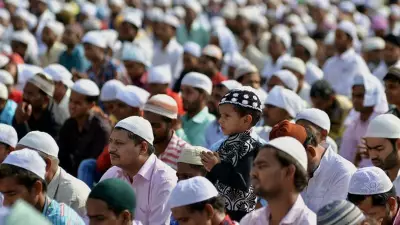
Political Setback for Mithilanchal in New NDA Ministry
The formation of the new Nitish Kumar-led NDA ministry has brought disappointing news for the Mithilanchal region of Bihar, with only two ministers inducted from this historically influential area. The limited representation has noticeably dampened the celebratory mood following the coalition's electoral victory in the region.
Ministerial Representation Drops Significantly
Only two politicians from Mithilanchal found places in the new cabinet - Arun Shankar Prasad of the BJP from Madhubani and Madan Sahni of the JD(U) from Darbhanga. This represents a substantial reduction from the previous administration, which featured five ministers from the same region.
The outgoing cabinet had two ministers from Madhubani - Nitish Mishra and Sheela Mandal - and three from Darbhanga, namely Sanjay Saraogi, Jiwesh Mishra and Madan Sahni. Among these five, only Madan Sahni has managed to retain his position in the first round of ministry formation, leaving the others waiting for potential inclusion in future expansions.
Strong Electoral Performance Contrasts with Poor Representation
The limited ministerial berths come despite the NDA's impressive electoral performance in both districts. The coalition, comprising the BJP, JD(U), LJP(RV), RLM and HAM-S, won all 10 assembly seats in Darbhanga and secured nine out of ten constituencies in Madhubani.
This performance mirrors their 2020 results, when the NDA had captured eight seats in Madhubani and nine in Darbhanga. The consistent electoral support makes the reduced ministerial representation particularly puzzling for local political observers.
Historical Political Dominance Fades
Political analysts note that Mithilanchal no longer commands the influence it once held in Bihar politics. The era when leaders like LN Mishra, Bhola Paswan Shastri, Karpoori Thakur and Jagannath Mishra ensured the region called the shots for over two decades has long faded, according to Subhesh Chandra Jha, a septuagenarian observer of the region's political tides.
Muneshwar Yadav, Head of Department of Political Science at LNMU in Darbhanga, philosophically noted that ups and downs are part of politics, acknowledging the changing political landscape.
Caste and Loyalty Trump Geography in Ministry Formation
A BJP functionary privately admitted that the numbers are definitely unfavourable for Mithilanchal and suggested that caste considerations and loyalty had outweighed geographical representation this time. The functionary's comments hint at internal displeasure over some exclusions from the ministerial list.
The regional imbalance becomes more apparent when comparing with other areas. Seemanchal region with 24 seats has received four ministers, while Magadh region continues to maintain its usual heavy quota of representation, making Mithilanchal's two ministers seem disproportionately low.
Concerns Over Developmental Neglect
The reduced ministerial presence has intensified fears that Mithilanchal's pressing concerns will receive even less attention in Patna's power corridors. The flood-prone region continues to struggle with poor infrastructure, significant migration and agricultural distress.
Local residents worry that with diminished political clout, their ongoing battles against these challenges might be further sidelined in government priorities. As one resident from Jhanjharpur constituency noted, while others might get ministerial positions in future expansions, the immediate reduction in representation doesn't bode well for the region's development agenda.
The political tremors are visible in both BJP and JD(U) camps in the region, with many hoping that the next cabinet expansion will address the current imbalance and restore some of Mithilanchal's traditional political influence.





